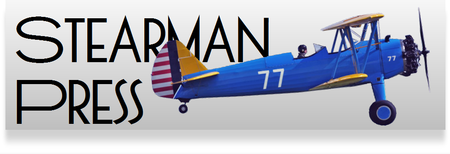Thanks for all your comments! And your patience with our survey glitch. Regarding that survey: please note that we have no way to identify which comment matched which answer. Also, if you sent us a question/comment via email and didn't receive an answer, then something broke; please resend.
On that note, if you use a spam filter that requires the sender to be "pre-approved"; then please "pre-approve" anything from stearmanpress.com! Those automated "you must ask for approval" messages do get lost.
Okay, let's address some of your comments:
Intended Market: Frankly, most people that already have a full darkroom, probably won't buy this. That's fine. That's not who we're building it for. We see three market segments:
- People who have rediscovered film: 35mm, 120 etc. They may even have their old enlarger stuck up in the attic but don't have room to setup a dedicated darkroom.
- The 40% of SP-445 users who are scanning their negatives and then making digital prints. Many might consider making contact prints or even enlargements if there was an easier way to get setup.
- Larger large format film users. This would be an alternative for processing larger sheet film. One of the challenges to building a larger version of the SP-445 is the variety of film formats once you go past 4x5. (I think we've counted over a dozen, plus a few that are smaller.) The variety fragments the market and makes it harder to optimize the design.
Finally, remember that almost 60% of survey respondents selected "not enough room" as the main reason they don't make silver prints. Hopefully, we can fix that for some of them. Interestingly, less than 2% selected "just not interested" as the reason.
Modular design: This contraption (we're still trying to think of a cool name for it) would disassemble for storage. The trays would detach and stack inside each other; the baffles in the print washer would slide out and everything would fit in the tank (see rendering).
Agitation: we've always agitated a print by moving it back and forth in the solution; not by rocking the entire tray. Ansel recommend lifting the print out and turning it over. (He also did this with his bare hands! We recommend tongs or Nitrile gloves.)
Adding an option to rock the tray would violate our goal of simplicity. Of course, you could float another tray in the tray.
Orientation: We envisioned the print washer in the rear, away from the user. While the rendering shows the trays stacked from right to left (favoring a right-handed user); the design will allow you to stack left to right.
Temperature control: Our thought was to just set the wash water at the desired temperature and run it though the trays and then into the wash tank. Now if you want the tray solution at 68 degrees, you might have to set the water temperature to 65, depending on how warm the room is.
We were surprised by how many people weren't concerned about maintaining a constant temperature. True, you can simply adjust the development time to compensate but that poses its own challenges.
And yes, we have some thoughts about a temperature control unit.
Work in progress: As we've said, this is just a rough draft of a pre-prototype. We don't know what direction things will take but your feedback is important.
